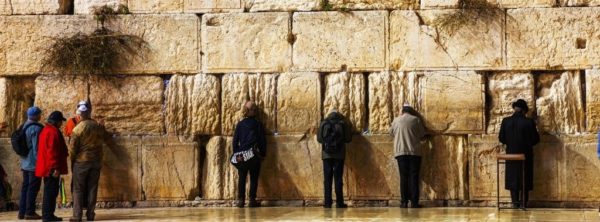The physical location of the Golan Heights is between Syria and Israel. Israel lies just west of the Jordan River, which is situated on the Golan’s western border. Mount Hermon is on the north, and Jordan is on the south. The Golan is a rocky area overlooking the upper section of the Jordan Valley. It spans approximately 690 square miles across a plateau.
On the eastern border of the Golan Heights is what is called the United Nations Disengagement Observer Force (UNDOF) zone. It was established by the United Nations Security Council on May 31, 1974. Syria lies just beyond the UNDOF zone.
The Location of the Golan Heights Points to Its Importance
The location of the Golan Heights answers the question as to why it is so important. Because of its topography, it creates a natural barrier and lookout point to all of Israel, specifically Jerusalem. It is described as the “high place” because it is, in fact, one of the highest lookout points that also creates a buffer zone against Syria.
The Location of the Golan Heights | What’s the Purpose of the UNDOF on Its Eastern Border?
The answer to this question is found in the more recent history of the Golan Heights. The UNDOF zone was established in response to the Egyptian and Syrian forces’ surprise attack on Israel in 1973. This became known as the Yom Kippur War, or the 1973 Arab–Israeli War.
The United Nations Security Council called for a cease-fire, and the zone was established the following year. The UNDOF operate in the zone under the mandate to supervise the cease-fire.
1973 | History of the Golan Heights and the Yom Kippur War
On October 6, 1973—on Yom Kippur, the holiest day on the Jewish calendar—there was a surprise attack on Israel by a coalition of Arab states led by Egypt and Syria. Egyptian forces attacked Israel at the Suez Canal. Meanwhile, Syrian forces attacked in the location of the Golan Heights.
Israel fought back, stopping the attacks, and reclaimed some of the lost ground. The battle continued until October 25, 1973. This is when the United Nations called for a cease-fire.
Was There Significance to the Attack Made on Yom Kippur?
In short, yes. The Egyptian and Syrian forces knew that Israel would be observing Yom Kippur, which meant the nation’s guard would be dropped temporarily.
As mentioned, Israel fought back. At the location of the Golan Heights, 150 Israeli tanks faced off with 1,400 Syrian tanks. At the Suez Canal, 500 Israeli soldiers faced off with 80,000 Egyptian soldiers.
Looking at these numbers, it would seem impossible for Israel to overcome.
Because of the surprise attack, the Egyptian forces were able to move 15 miles inland within 2 days. Syrian troops followed the same pattern, advancing nearly 15 miles into the Golan Heights region. The war started on October 6th, and by the end of the following day, Israel’s outcome was more than questionable.
But Israeli forces united and strategized. They were able to push back opposing forces and reclaim the lost land.
Cause of the Yom Kippur War | Why Did Egypt and Syria Attack Israel in 1973?
Even after Israel’s established statehood in 1948, her neighbors continued to press in. Following a series of events, the conflict came to a head when Egypt blocked Israeli shipping through the Straits of Tiran as a type of boycott. As a result, Israel invaded the peninsula in 1956.
Israel’s point was to…
- Communicate she had established her statehood and was not letting it go.
- Communicate to her neighbors that they needed to reopen the strait for shipping.
This Eventually Led to the Six-Day War
Israel eventually withdrew, and it was agreed the strait would be reopened. Tensions continued to grow, however, and the gates were closed again—this led to the Six-Day War, which began on June 5, 1967.
Jordan, Iraq, Saudi Arabia, Syria, and Lebanon moved toward Israel’s border. With the very real threat of her decimation, Israel launched an aerial strike on June 5th—the start of what would come to be known as the Six-Day War.
The war ended on June 10th with Israel’s victory. The Israeli military had seized the Sinai Peninsula from Egypt and the Golan Heights from Syria.
1967 | History of the Golan Heights and the Six-Day War
Resentment grew among the Arab states regarding Israel’s victory in the Six-Day War. The Syrian president wanted to regain control of the Golan Heights. He understood that the location of the Golan Heights was important because it held a strategic vantage point from which Israel (or whoever controlled it) had the ability to launch an attack.
Because of the strategic location of the Golan Heights, whoever controls it has the advantage.
During the Six-Day War, Israel seized the Gaza Strip, the West Bank, East Jerusalem, and the Sinai Peninsula. Israel’s victory was noticed by other nations, as the country’s well-prepared strategy and strong military were proof that she was a force to be reckoned with.
In order to push back the borders, the Arab leaders decided again to attack Israel—leading to the Yom Kippur War.
In Summary… The Golan Heights Has a History for a Reason
Here’s what we’ve learned thus far…
The physical location of the Golan Heights is between Syria and Israel. It is a 690-square-mile plateau that gives a vantage point for all of Israel, especially Jerusalem.
The location of the Golan Heights also has political significance. It has been fought over for decades.
1948 | Israeli Independence
Following Israel’s independence in 1948, she was threatened constantly by her neighbors for her right to exist.
1967 | The Six-Day War
The Six-Day War erupted in 1967 after Egypt blocked Israeli shipping through the Straits of Tiran, creating a type of boycott. During the war, Israel defeated the combined armies and gained the West Bank, East Jerusalem, the Gaza Strip, the Sinai Peninsula, and the Golan Heights.
The settlements along this territory remain a source of conflict between Israel and her neighbors to this day. They also represent Israel’s stance to remain a democracy and a Jewish state—especially the Golan Heights region.
1973 | The Yom Kippur War
Embittered and resentful of Israel’s victory and success from the Six-Day War, Egypt and Syria decided to plan another attack. This time they attacked on Yom Kippur, the holiest day on the Jewish calendar, knowing Israel’s guard would be dropped temporarily as the nation celebrated.
Again, Israel defeated the opposition and reclaimed ground that was lost during the early days of the war.
From this, you can see how the location of the Golan Heights is a highly sought-after and crucial piece of real estate that carries with it the success and future of Israel.
If you want Israel to thrive, she must remain in control of the Golan Heights. In order to do that, she needs the support of those who believe in her existence.








